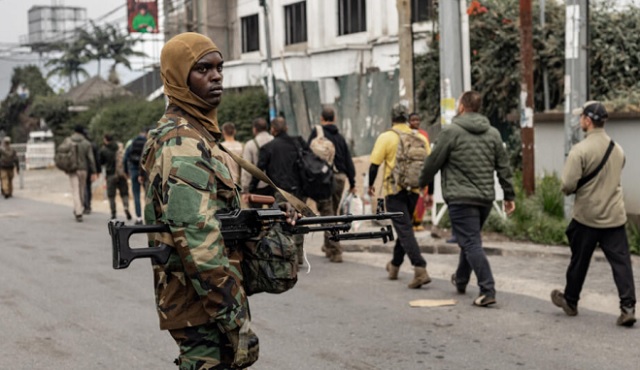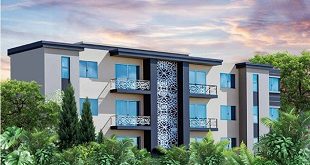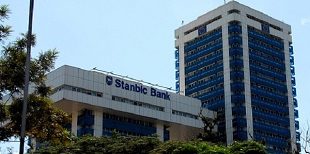
Behind the intrigue of South Africa and Tanzania’s role
ANALYSIS | IAN KATUSIIME | A terse exchange between South African President Cyril Ramaphosa and his Rwandan counterpart Paul Kagame on X was the latest escalation in the fallout over the fighting in eastern Democratic Republic of Congo (DRC).
The exchange showed how the situation could spiral out of control. Ramaphosa said on X “The fighting is the result of an escalation by the rebel group M23 and Rwanda Defence Force (RDF) militia engaging the Armed Forces of the DRC (FARDC) and attacking peacekeepers from the SADC Mission in the Democratic Republic of Congo (SAMIDRC).”
The post provoked a sharp response from Kagame “If South Africa wants to contribute to peaceful solutions, that is well and good, but South Africa is in no position to take on the role of a peacemaker or mediator. And if South Africa prefers confrontation, Rwanda will deal with the matter in that context any day.”
Tensions are running high in Goma, the largest city in eastern DRC, now under the control of M23, a rebel group said to be backed by Rwanda. In Goma are troops from South Africa, Malawi and Tanzania, part of SAMIDRC, that was deployed to bring peace and security to eastern DRC by engaging armed groups there like M23.
In the fighting that happened, 13 South African troops were killed and there is a dispute on who opened fire on them. The killing of these soldiers has upped the ante due to the principle of collective self-defence and collective action outlined in the SADC Mutual Defence Pact (2003). The Pact states that; “Any armed attack perpetrated against one of the States Parties shall be considered a threat to regional peace and security and shall be met with immediate collective action”.
South Africa’s minister of defence and army chief have issued strongly worded statements since the deadly clashes.
The escalation led to an extraordinary summit of East African Community (EAC) heads of state that happened virtually on Jan. 29.
The summit attended by President Yoweri Museveni and the leaders of South Sudan, Somalia, and Tanzania reflected the failure to find a way forward to resolve the crisis where lives continue to be lost and thousands get displaced.
President Felix Tshisekedi of DRC skipped the meeting convened by Kenyan President William Ruto but in a speech to his nation, Tshisekedi did not pull punches.
“I therefore call on the entire nation: men and women; young and old; political actors; economic operators; members of civil society, religious denominations, artists, and athletes; to mobilize, to unite behind our valiant Armed Forces, and to contribute, each at their own level, to the effort of war.”
Analysts say Tshisekedi has a weak hand following the capture of Goma by a handful of rebels who defeated his government troops not to mention the European mercenaries fighting alongside them.
During the summit, Kagame expressed frustration at the EAC mediation process and by other mediators like Angola. The outcome of the EAC summit called for a joint meeting with the South African Development Community (SADC).
The regional bloc headquartered in Botswana has sixteen member states including DRC and Tanzania who are part of the EAC. The main objectives of the SADC are to promote development, peace and security and advance economic growth.
Diplomatic intrigue
In 2023, SADC authorized a regional force SAMIDRC to deploy in DRC to the chagrin of Rwanda.
According to experts, the deployment of SAMIDRC fueled diplomatic and geo-political intrigue. Tanzania has troops in the force but the country never deployed there in the earlier EAC Regional Force that was expelled by Tshisekedi in 2023 after one year of deployment.
The presence of Tanzanian forces in eastern DRC has put it at loggerheads with Rwanda because of Rwandan sentiments that Tanzania has ganged up with its friends from SADC against the small East African nation. Kagame in his statement said SAMIDRC has no role to play in eastern DRC and also bemoaned the displacement of a “true peacekeeping force” in EACRF.

The EACRF had troops from Burundi, Uganda, Kenya, and South Sudan. President Samia Suluhu of Tanzania has not commented on the issue publicly but she holds a key role as the chairperson of the SADC Organ on Politics, Defence, and Security Cooperation.
The situation in Goma has close to six countries involved. Uganda, once said to be backing M23, has kept a quiet stance since the skirmish broke out.
Rwanda on the other hand, milked much needed political capital from the evolving situation by providing safe passage to fleeing residents, UN staff, and captured soldiers.
M23, a rebel group that has existed in eastern DRC for sixteen years, overran Goma on Jan. 26. According to media reports, FARDC troops gave in without a fight and fled as soon as the rebels advanced. But the fall of Goma also exposed another complication: the presence of over 280 mercenaries from Romania who followed suit and surrendered.
The mercenaries were reportedly fighting alongside FARDC but they looked unbothered by the turn of events since their gravy train had left the station. The Rwandan government transported them to Kigali International Airport and were en route to Europe by press time.
The capture of Goma by M23 sparked unrest in the DRC capital, Kinshasa, where protestors ransacked embassies of Uganda, Rwanda, Belgium, France, U.S. accusing the countries of complicity and inaction in the unending crisis in the eastern part of the country.
DRC citizens say Rwanda are Uganda have caused instability by supporting various armed groups while also accusing the above Western powers of turning a blind eye to the injustices in the country because they are profiteering from the vast mineral wealth in the DRC.
Following the outbreak of violence, U.S. Secretary of State Marco Rubio perhaps in his first major call, urged Kagame for a ceasefire. But fighting has gone on with civilians and soldiers killed, and more displacement happening.
Congolese citizens say Rwanda has must be held accountable for the atrocities it is committing on DRC soil. “The UN Group of Experts has provided a report showing how the Rwandan military is providing sophisticated weaponry to the M23. The rebels have the technology to jam the GPS system to prevent planes from flying into the Congo,” said Kambale Musavuli, an analyst at the Centre for Research on Congo.
DRC social media is awash with images portraying Rwanda as an aggressor responsible for the endless suffering of Congolese citizens. Rwanda says the state in DRC persecutes Congolese of Rwandan ancestry, the Banyamulenge which it cites as justification for its intervention.
The flare up in Goma has been simmering since the start of the year. In an address to the diplomatic corps in Kigali in mid-January, Kagame discussed at length the situation in eastern DRC and gave a heads up of Rwanda’s pending action.
Kagame did not mince words when speaking about Tshisekedi saying the DRC president has served two terms for which he was not elected. Tshisekedi and Kagame have had a long running war of words but the advance on Goma by M23 marked a significant escalation.
The transfer of power in Washington from Joe Biden to Donald Trump appeared to be a factor. Trump’s disinterest in foreign conflicts seems to have motivated the march of M23 on the key town for the first time since 2012.
M23 is the most prominent militia in eastern DRC—a region said to be teeming with more than 100 armed groups; proxies and some independent—controlling the mineral trade and responsible for the death of millions of people and the resulting refugee situation in neighbouring countries.
The M23 is a group of former rebels of the National Congress for the Defense of the People (CNDP). It adopted its name from the March 23, 2009, agreement between the CNDP and the Congolese government, which M23 leaders claimed the government reneged on.
M23 first captured Goma in 2012 but international pressure and a UN intervention brigade comprising Tanzanian and South African troops compelled the rebels to retreat to their enclaves a year later.
Thirteen years later, the group is back with a vengeance and is now calling the shots in Goma—a strategic border town that has blossomed into a trading hub in the last few decades. Goma is located on the edge of the border with Rwanda and has a population of about 800,000.
Goma lies in the North Kivu province with rich gold reserves and other mineral deposits that has made it a haven for investors and mining executives angling for the latest lucrative deals in this regional hotspot as they jet in and out of Goma International Airport.
Its picturesque landscape and natural beauty have also created a thriving tourism industry. But Goma’s proximity to the thickets of eastern DRC has also placed its fortunes on a knife edge because of the unrest that the area has had for eternity.
 The Independent Uganda: You get the Truth we Pay the Price
The Independent Uganda: You get the Truth we Pay the Price



